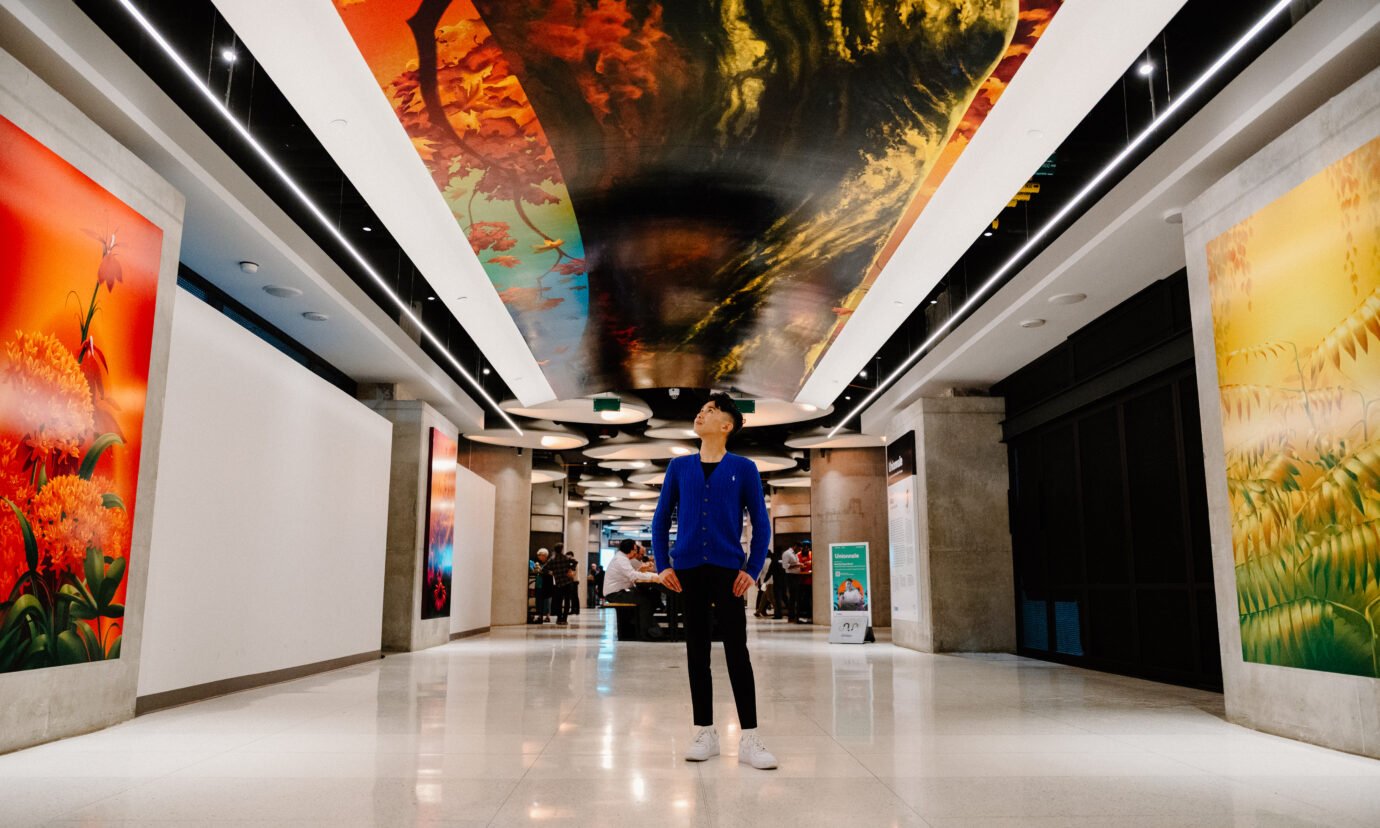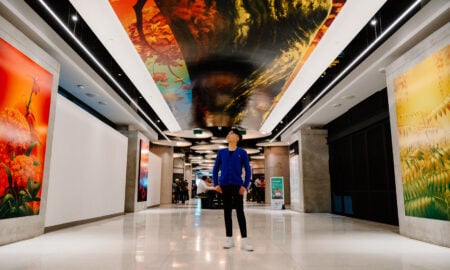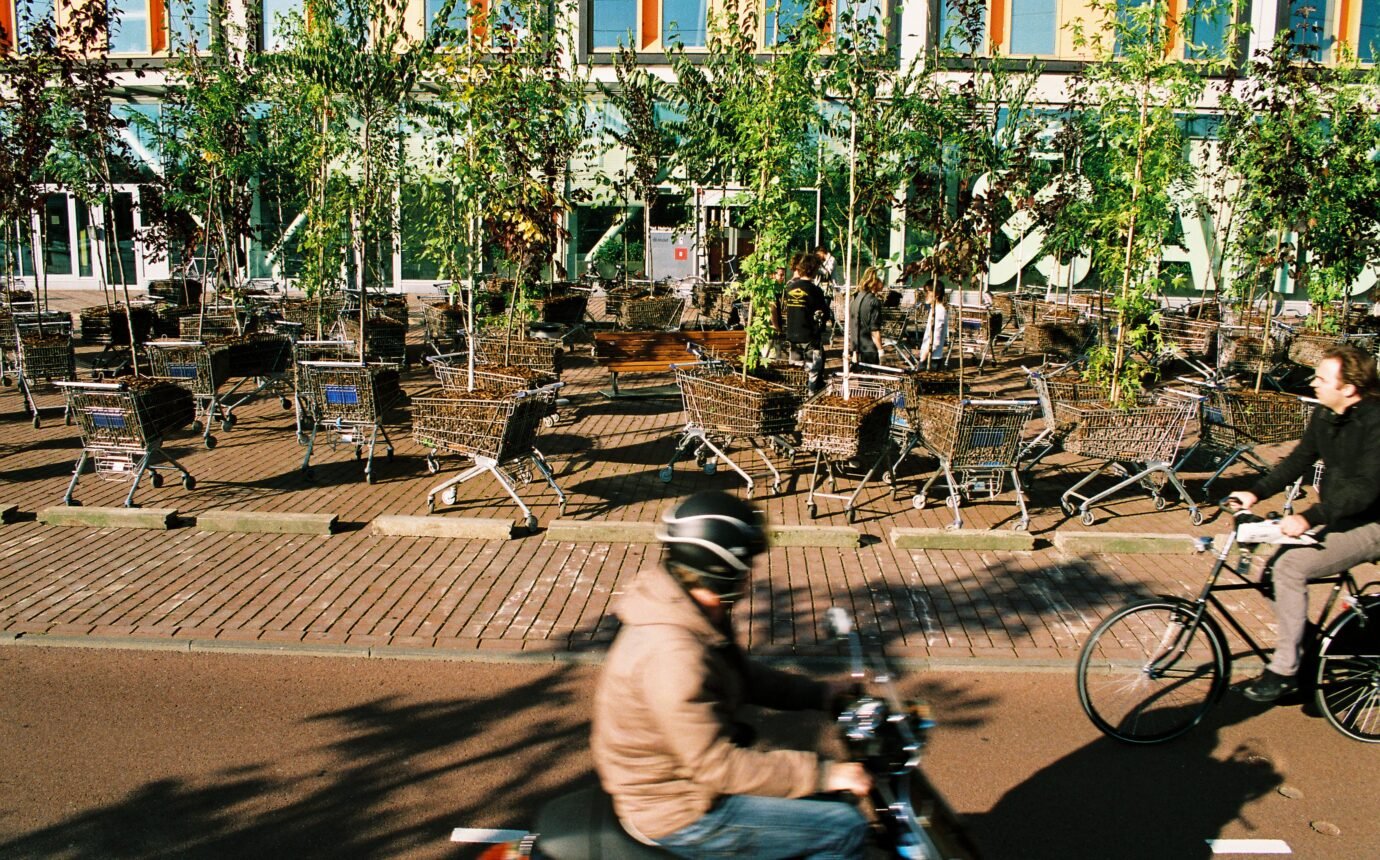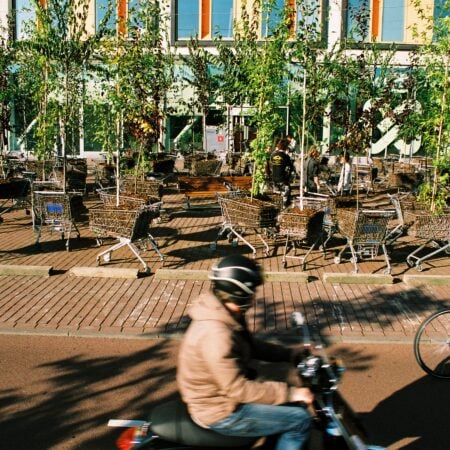Artist Jason Zante Invites Quiet Reflection Into Union Station


Aura turns Toronto’s busiest subway station into a vivid escape
In the middle of downtown Toronto’s relentless momentum, a moment of stillness now lives. Aura, the latest installation by Filipino-Canadian artist Jason Zante, invites Union Station commuters and visitors to the city into a vivid, dreamlike escape.
Unveiled as part of Unionnale, the annual public art initiative, Aura transforms the station into an immersive sanctuary that stretches across three major surfaces: a vaulted ceiling, a bench wall mural and a series of vibrant art panels. More than just beautification, the installation is a sensory offering—a visual comfort in the chaos of transit life, and a heartfelt celebration of Ontario’s ecological richness.
Inspired by Toronto’s laneways and alleyways, Zante envisioned Aura as a parallel act of intervention: a burst of natural wonder in a place of perpetual motion. Further drawing from the station’s busy foot traffic, Jason explains that he, “wanted to contrast that lively energy with something that was more calming, that was conducive for people to pause and reflect, and to have a moment of stillness in their day, even if it’s just for a few minutes.”
Rooted in mural aesthetics, Zante examines how art shapes and responds to public environments—Aura responds to the station’s momentum not with friction, but with softness. Zante’s composition wraps its viewers in colour and serenity, making space for contemplation. “Nature is full of what we call awe triggers,” he explains. “Nature derived imagery is one of those ways that make it easy for people to feel instantly calm because it’s familiar. It’s something that reminds us of the outdoors.” “I wanted to create that feeling of awe when people are looking at the space which is like being in the presence of something that’s vast and indescribable.”
Central to the work is a curated selection of native Ontario plant life including butterfly milkweed, staghorn sumac, cardinal flower and blue false indigo. These plants are not decorative—they are essential to our backyard. “I chose them specifically because they contribute to so much of our biodiversity—they feed small animals while most of them are also pollinators, so they attract butterflies.”
Overhead, the centrepiece: a majestic maple tree unfolds across the vaulted ceiling, its leaves shifting through all four seasons. “I wanted to show metamorphosis and transformation,” says Zante. “So, it’s like this cycle that you see unfold when you’re walking the whole length of the installation. It’s also Canada’s national emblem. And for me, it’s a reminder of fall, which I think is the most beautiful season to witness, especially for a maple tree.”
Zante’s multidisciplinary approach—where digital painting meets traditional acrylic—brings a layered complexity to Aura. Every element was created digitally and then printed on vinyl: “I wanted to make sure the artwork fit the proportions and each of the panels would work in favour of the space, so it had this immersive quality to it.”
While Zante is no stranger to grand biophilic commissions—including a mural for the Four Seasons Hotel and an installation for Fallsview Casino—this project reaffirmed his love for nature. “Nature is not just something that I want to be out there experiencing in the world, but I also want to depict it in my artwork so that people can experience the same feelings of awe, of joy and of that kind of energizing and revitalizing feeling of being outdoors.”
In spaces like Union Station, often designed for efficiency, Zante’s installation encourages slowness. Even if someone has only ten seconds, “from a glance, the first thing that you notice is the colour more than the actual plants depicted. So, I think if they’re able to get a whiff of that colour, it instantly kind of creates a feeling within that person.”
And that’s what Zante hopes Aura contributes to the wider dialogue around public art: a call to reimagine urban spaces not just as functional, but also as emotionally resonant. Zante believes images of nature—especially rooted in local ecology—can transform visually-oppressive environments into uplifting ones. “It’s a reminder of what already exists in our province in terms of these native species, but also a reminder for us to protect and preserve what we already have. And I think perhaps it’s a reminder of how we need to beautify more of our interior spaces so that it includes more biophilic imagery because they really do trigger positive emotions, psychologically speaking.”



































